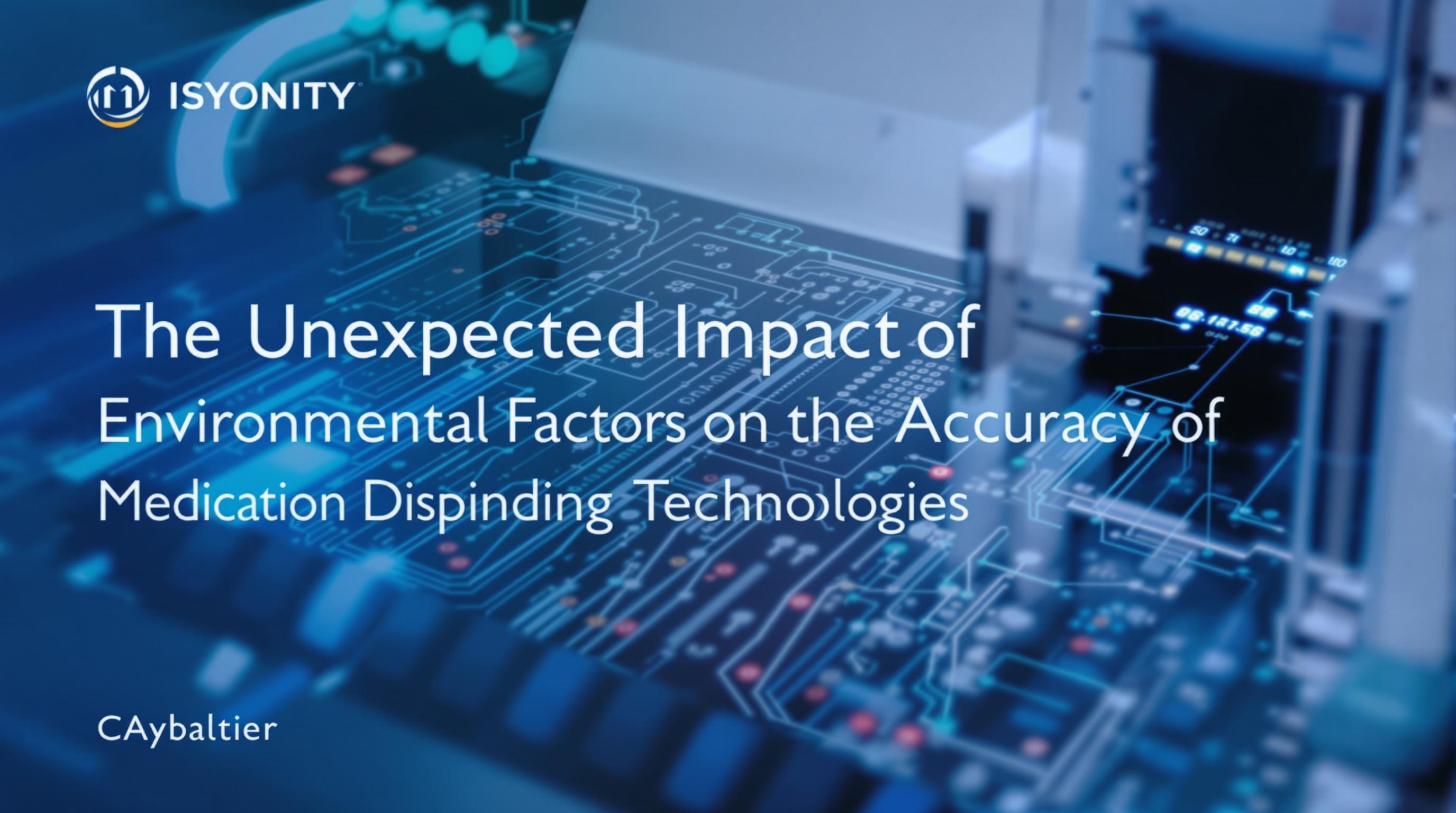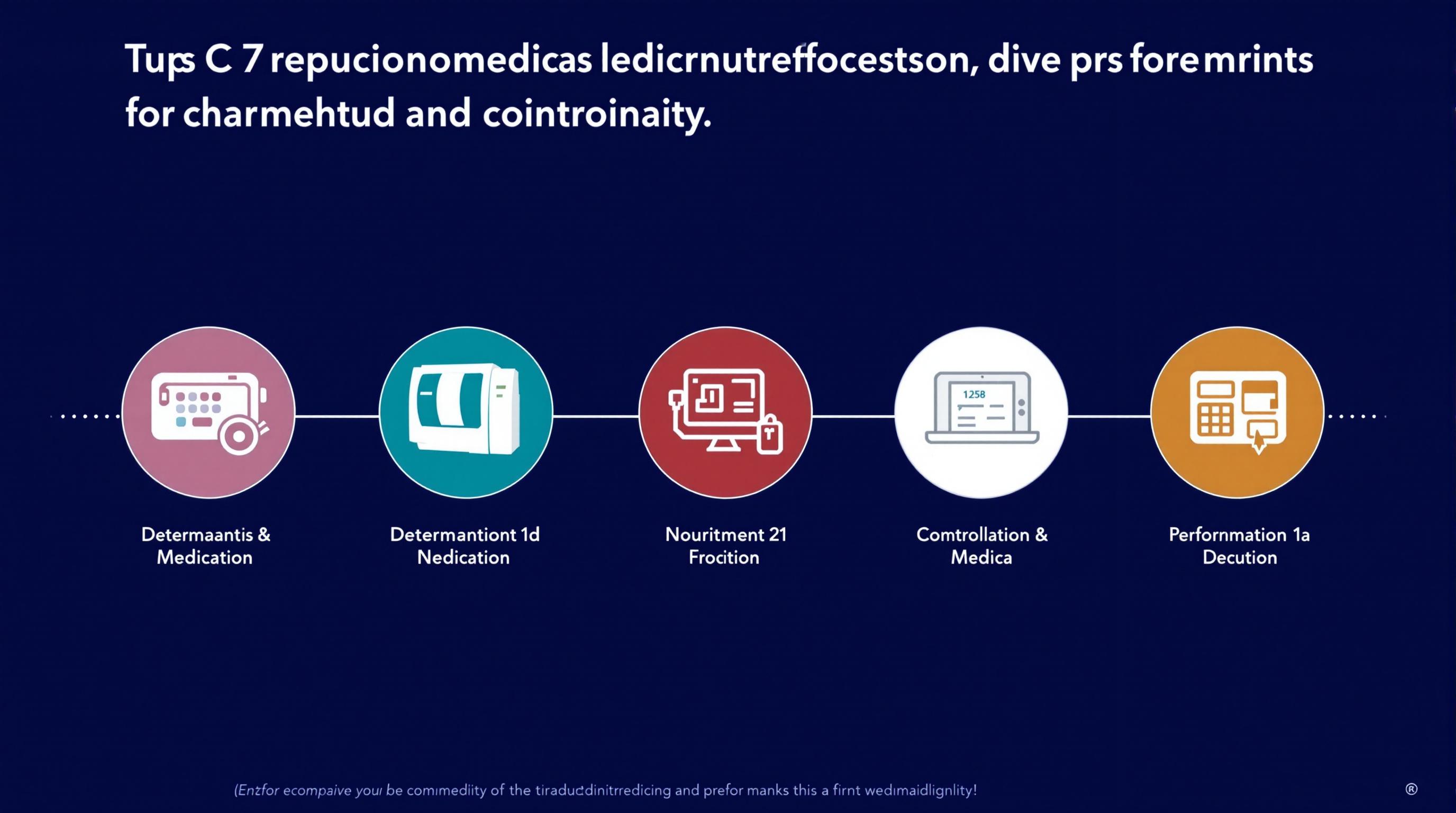Related Articles
- The Unexpected Impact of Environmental Factors on the Accuracy of Medication Dispensing Technologies
- Exploring the Influence of Mental Health Stigma on Accessibility and Affordability of Coverage in Modern Insurance Plans
- How Cloud Storage Quirks Are Quietly Complicating Patient Data Protection in Modern Healthcare Settings
- Top 6 Emerging Medical Billing Platforms Revolutionizing Practice Revenue Cycles Since 2019
- When Digital Distance Deepens Divide: Surprising Social Costs of Remote Health Services in Underserved Communities
- The Unexpected Role of EHR Usability in Physician Burnout and Strategies to Reclaim Workflow Balance
The Unexpected Impact of Environmental Factors on the Accuracy of Medication Dispensing Technologies
The Unexpected Impact of Environmental Factors on the Accuracy of Medication Dispensing Technologies
Environmental factors play a surprisingly large role in the accuracy of medication dispensing technologies, impacting patient safety and healthcare outcomes. Exploring temperature, humidity, and electromagnetic interference reveals critical challenges and solutions in this evolving field.
Imagine a pharmacy robot meticulously preparing prescriptions. You'd expect precision, right? But what if the room was too hot or the air too moist? Environmental factors such as temperature fluctuations and humidity levels can cause mechanical issues or electronic malfunctions in dispensing machines, leading to inaccurate dosages. A study by the Journal of Medical Devices (2020) observed a 12% increase in dispensing errors in hospitals where room temperatures exceeded recommended levels.
Climate impacts? Yes, really! Let's take a closer look: many automated dispensing systems rely on sensitive electronic components and motors. These parts can suffer from malfunctions when exposed to extremes. For instance, high humidity may cause condensation forming inside circuits, while dust accumulation can interfere with sensors. This means that a pill dispenser working flawlessly in one environment might falter in another.
The Case of the Curious Cold Storage
In 2018, a mid-sized hospital in Iowa investigated sudden discrepancies in medication delivery. They traced the problem back to refrigerated units storing certain temperature-sensitive drugs. While the storage conditions were appropriate, the automated dispensers situated in adjacent warmer areas began malfunctioning due to condensation buildup as staff transferred medications. This incident underscores the delicate balance required between storage and dispensing environments.
Did you know that around 23% of medication dispensing errors are linked to environmental conditions? While technology has vastly improved accuracy, these factors introduce an often overlooked variable in patient safety. And it's not just hospitals; pharmacies, nursing homes, and even home-use automated dispensers can be compromised by their surroundings.
Okay, but what about electromagnetic interference (EMI)? This sneaky saboteur isn't just science fiction. EMI can stem from other electronic devices nearby, such as wireless routers, mobile phones, or even certain lighting systems. These interferences may cause temporary glitches in dispensing software, leading to misreads or incorrect dosage calculations. According to a 2019 study published in IEEE Transactions on Biomedical Engineering, EMI contributed to a 7% failure rate in several hospital dispensing units tested under simulated conditions.
It's a jungle out there for pill dispensers
Humidity, temperature changes, dust, and electromagnetic signals – environmental factors feel like a wild card in the medication dispensing game. To counter this, manufacturers have begun integrating more robust sensors and adaptive software that can adjust to environmental inputs in real time. Moreover, implementing strict climate control protocols inside pharmacies and hospitals helps reduce risks.
What does this mean for patients?
Simply put, if the system – tech or human – is dealing with compromised conditions, the chance of errors increases. We rely on machine accuracy to avoid overdoses, underdoses, or wrong medications, especially for populations like elderly patients or those with chronic illnesses. Understanding how environmental factors play a subtle yet significant role is vital for caregivers and healthcare providers.
Fun fact: some medication dispensing devices now come equipped with built-in environmental monitors that alert staff if conditions like temperature or humidity veer out of preset safe ranges. It’s like having a weather station specifically for your pill machine! Innovations like these show promise, but widespread adoption remains a work in progress.
From my perspective, as a 45-year-old healthcare technology analyst, the biggest takeaway is this: no technology operates in a vacuum. The environment dresses the stage on which our machines perform, and ignoring this can lead to benign-looking errors culminating in serious health consequences.
Strategies to Tackle the Environmental Challenge
Many institutions have started comprehensive evaluations of their medication storage and dispensing environments. Simple tactics include ensuring air conditioning systems are well-maintained, monitoring humidity levels with dehumidifiers, and routinely cleaning dispensing equipment to prevent dust buildup. Staff training about the influence of physical environments on technology performance also plays a critical role.
For a more futuristic angle, consider the integration of IoT (Internet of Things) devices that continuously monitor environmental parameters and synchronize with medication dispensing software to prompt preventative measures. This multi-layered approach promises to safeguard dispensing accuracy even under varied conditions.
To keep things in perspective, a casual stroll through any hospital or pharmacy would reveal that temperature, dust, and electronics buzzing everywhere are all part of the environment. Yet until recently, much of the industry treated technology and environment as separate variables. Research now insists they’re intertwined, demanding a holistic approach.
Case Study Spotlight: Japan’s Approach to Robust Dispensing Systems
Japan, known for its advanced healthcare tech, has invested heavily in environments designed specifically for medication technologies. In Tokyo General Hospital, a specialized clean room with standardized humidity and temperature controls reduced dispensing errors by nearly 18% over 2 years, according to hospital reports. This success story offers a blueprint for other healthcare systems worldwide.
Wrapping It Up (But Not Too Seriously)
So, what have we learned? If you thought medication dispensing machines were just cold, logical robots churning out pills flawlessly, think again. They’re as vulnerable to their surroundings as we are to weather. Maybe the next time your smartphone glitches after a rainstorm, spare a thought to the pill dispensers silently battling invisible enemies like humidity or the neighborhood Wi-Fi.
Staying vigilant about these environmental nuances is not just geeky tech talk—it’s a frontline defense in patient safety and healthcare quality. Because at the end of the day, the environment we build around our technology can make all the difference between health and harm.
Sources:
- Journal of Medical Devices, 2020, "Impact of Environmental Conditions on Medication Dispensing Accuracy"
- IEEE Transactions on Biomedical Engineering, 2019, "Effects of Electromagnetic Interference on Automated Medication Systems"
- Tokyo General Hospital Internal Reports, 2022




